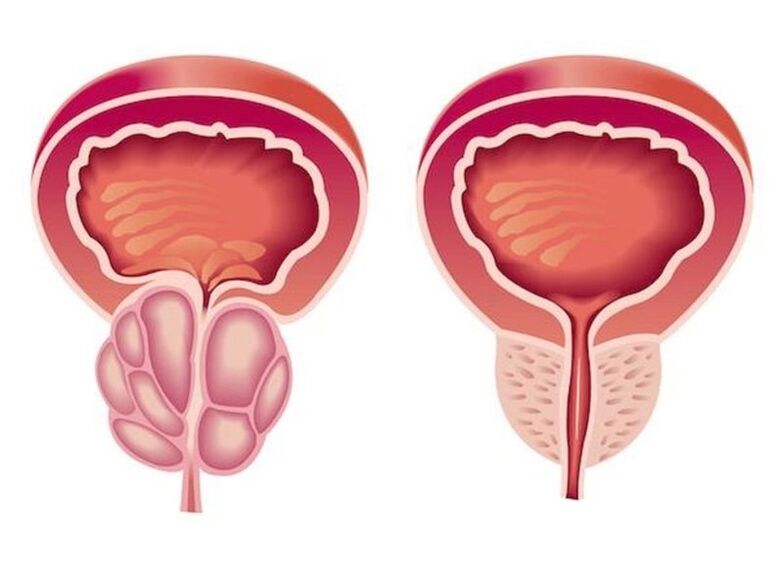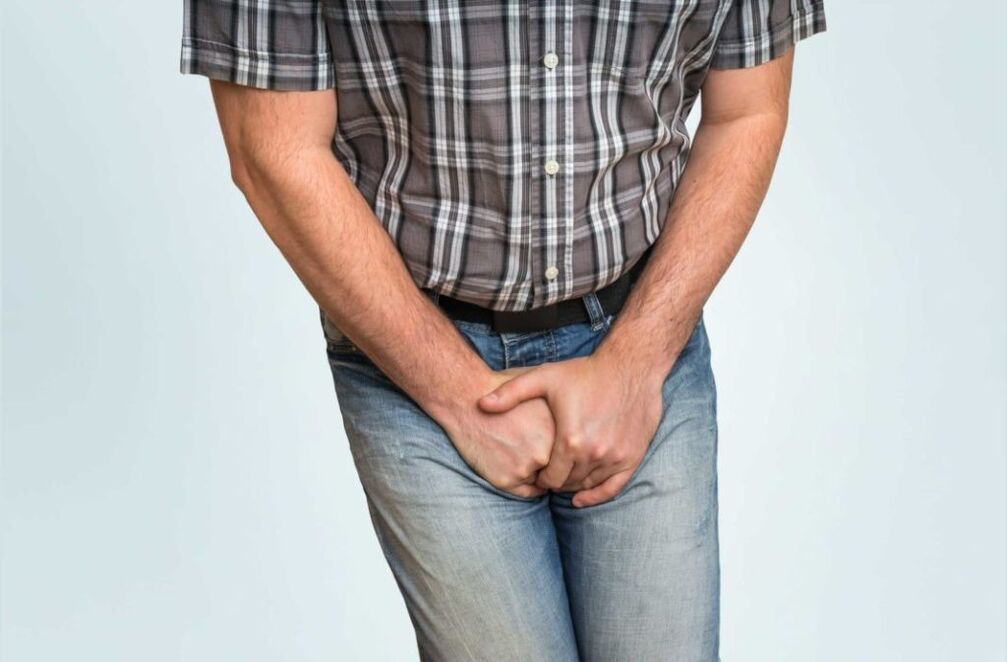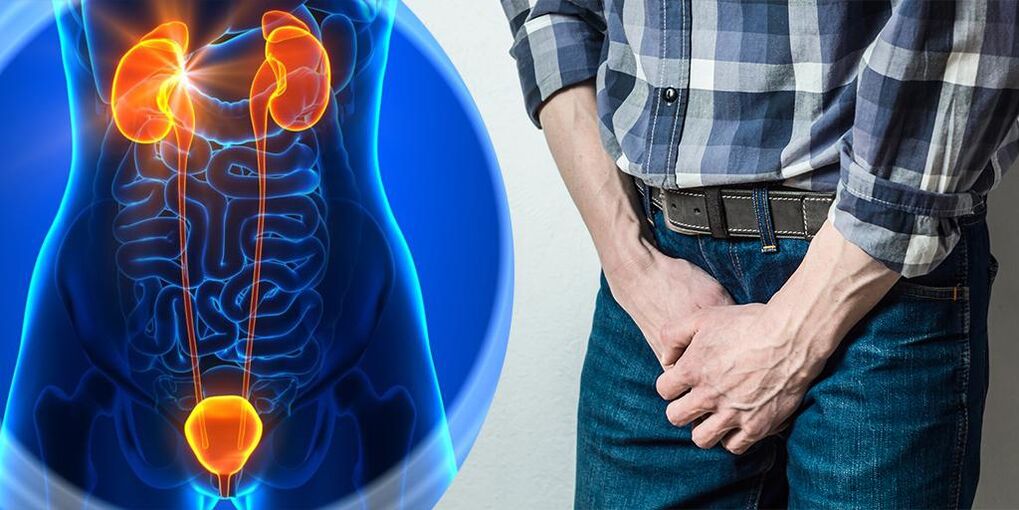Prostatitis is an inflammatory disease of the prostate gland. Frequent campaigns in the toilet, penis, scrotum, rectum, sexual disorders (erection, early ejaculation, etc. ), sometimes delayed urine and urine blood insurance. Diagnosis of prostatitis was created in a typical clinical picture by a urologist or other specialist, the results of a rectal examination. In addition, the ultrasound of the prostate, the bacteria of the prostate secretion and the urine were included. Conservative treatment - antibacterial therapy, immunotherapy, prostate massage, lifestyle correction.

General information
Prostatitis - seed inflammation (prostate) gland - prostate. This is the most common disease of the genitourinarinal system in men. Most often it affects patients aged 25-50. In line with different data, 30-85% of prostatitis has 30-85% of men over 30. Perhaps the prostate gland abscess, testicitis and appendices that threaten infertility. The rise of infection leads to inflammation of the upper parts of the urogenation system (cystitis, pyelonephritis).
The pathology develops when an infectious agent is administered which, from the organs of the Göringurinary system (urethra, bladder), or distant inflammatory focus (pneumonia, influenza, fureculosis) is placed in the prostate tissue.
Causes of prostatitis
The gold staphylococcus aureus (Enterococcus), Enterobacter (Enterobacter), Pseudomonas (Pseudomonas), Proteus (Proteus) and Klebcelllah and Klebcelllah can behave in an acute process. (Klebsiella) and E. coli (E. coli). Most microorganisms belong to conditionally pathogenic vegetation and only cause prostatitis if there are other predisposed factors. Chronic inflammation is usually caused by Paul with microbial associations.
The risk of developing the disease increases during hypothermia, the presence of specific infections and conditions in the history of congestion in prostate tissues. The following predisposing factors are distinguished:
- General hypothermia (one or permanent, related to working conditions).
- A sedentary lifestyle, a specialty that makes a person in a long -term position (computer operator, manager, etc. ).
- Constant constipation.
- Violation of the normal rhythm of sexual activity (excessive sexual activity, prolonged abstinence, incomplete ejaculation deprived of the emotional coloring of "usual" sexual intercourse).
- Chronic diseases (cholecystitis, bronchitis) or chronic infectious focuses in the body (chronic osteomyelitis, absurd caries, tonsillitis, etc. ).
- Transferred urological diseases (urethra, cystitis, etc. ) and sexually transmitted diseases (trichomoniasis, gonorrhea).
- States that cause inhibition of the immune system (chronic stress, irregular and lower levels of nutrition, regular sleep lack, a state of exaggeration to athletes).
It is assumed that the risk of developing pathology increases with chronic intoxications (alcohol, nicotine, morphine). In the field of modern andrology, some studies prove that the provocative factor is a chronic foot chambers (vibration, concussion) among motorists, motorcyclists and cyclists. However, the vast majority of experts believe that all the circumstances listed are not the real cause of the disease, but only contributes to the aggravation of the latent inflammatory process in the prostate tissues.
In the occurrence of prostatitis, stagnation in prostate tissues determines the decisive role. Violation of capillary blood flow increases lipid peroxidation, edema, prostate tissues and the conditions for the development of the infectious process.

Symptoms of prostatitis
Acute prostatitis
There are three stages of acute prostatitis characterized by the presence of a certain clinical image and morphological changes:
- Sharp catarrhal. Patients complain of rapid, often painful urination, sacrum and perineum pain.
- Sharp follicular. The pain becomes more intense, sometimes radiating to the anus and increasing during emptying. The urination is difficult and the urine flows with a thin stream. In some cases, a delay of urine is observed. Subfebrile or moderate hyperthermia.
- Acute parenhimal. Pressed general intoxication, hyperthermia to 38-40 ° C, chills. Disuric disorders, often acute delay in urination. Sharp, pulsating pains in the perineum. It's difficult to empty.
Chronic prostatitis
In rare cases, chronic prostatitis becomes the outcome of the acute process, but they usually observe a primary chronic path. Temperatures sometimes rise to small values. The patient notes the poor pain of the perineum, the inconvenience caused by the urine and the interruption. The most typical symptom is the barely discharge of the urethra during emptying. The primary chronic form of the disease develops over a significant duration. Blood stagnation preceded it in capillaries and gradually transforms into abacterial prostatitis.
Chronic prostatitis is often a complication of the inflammatory process caused by a specific infection causal (chlamydia, ureaplasma, gonococcus). In many cases, the symptoms of a specific inflammatory process cover the manifestations of prostate lesion. It is possible that during urination the pain, the poor pain of the perineum, the barely emptying of the urethra during the densation. A mild change in the clinical picture often remains unnoticed by the patient.
Chronic inflammation of the prostate can manifest a burning sensation in the urethra and perineum, dysuria, sexual disorders, increased general fatigue. The result of a violation of efficiency (or fear of these infringements) often becomes mental depression, anxiety and irritability. The clinical picture does not always contain all the groups listed in the symptoms, different in different patients and changes. Chronic prostatitis has three main syndrome: pain, violations when they are involved in toilet, sexual disorders.
There are no pain receptors in the prostate tissue. The cause of pain in chronic prostatitis becomes almost inevitable due to the involvement of pelvic organs in the inflammatory process of nerve pathways. Patients complain of various intensity pain - weak, painful and intense, to sleep. It changes pain (increased or weakening) of ejaculation, excessive sexual activity, or the nature of sexual abstinence. The pains radiate into a scrotum, sacrum, feet, sometimes to the lumbar region.

As a result of inflammation of the chronic prostatitis, the volume of the urethral clamping prostate increases. The urethra lumen decreases. Frequent urinary urination of the patient and a feeling of incomplete emptying of the bladder. As a general rule, dysuric phenomena are expressed in the early stages. The compensation hypertrophy of the bladder and the urethra are then formed. The symptoms of dysuria are weakened during this period and then increase again during decompensation of adaptive mechanisms.
In the initial stages, efficiency violations can occur, which is manifested differently in different patients. Patients may complain of frequent night erection, deleted orgasm, or deterioration of erection. Accelerated ejaculation results in a reduction in the threshold of the center excitation, which is responsible for acquiring orgasm. Pain of ejaculation can cause a refusal of sexual activity. In the future, sexual disorders will pronounce. In an advanced stage, impotence develops.
The degree of sexual disorder is determined by many factors, including the sexual constitution and the patient's psychological atmosphere. Efficiency violation and dysuria changes in the prostate gland and the patient can inspire anything. If you have chronic prostatitis, you expect the inevitable development of sexual disorders and urinary disorders. Especially often psychogenic disorders in efficiency and entry with the toilet may occur in worrying patients.
Complication
In the absence of timely treatment of acute prostatitis, there is a significant risk of developing the prostate gland abscess. When the purulent focus is formed, the patient's body temperature rises to 39-40 ° C and may acquire a hectic character. The periods of heat alternate with pronounced chills. Perineum's sharp pain complicates urine and makes stools impossible.
The increase in edema edema leads to an acute urination delay. In rare cases, the abscess opens spontaneously into the urethra or rectum. When it opens into the urethra, the turmoil has an unpleasant spicy scent when it opens into the rectum, the stool PU -K and mucous membranes.
Chronic prostatitis is characterized by a corrugated, wavy, extended remission, which manifests itself in latent or extremely small symptoms. Patients who have nothing to bother often stop treatment and convert only with complications.
The most common complication of the chronic process is the inflammation of the testicles and the inflammation of the testicles and seed bubbles. The outcome of these diseases often becomes infertility.
Diagnosis

A typical clinical image simplifies the diagnosis of acute and chronic prostatitis. Make it mandatory:
- The rectal examination of the prostate
- Fencing of prostate gland secretion to determine the sensitivity of the microflor (by throwing the secret of the prostate and urine into bacteria).
- The ultrasound of prostate is carried out to identify structural changes (tumors, cysts, adenoma) and prostatitis from other diseases
- Spermogram to exclude or confirm infertility.
Treatment of prostatitis
Treatment of acute prostatitis
Patients with an acute process undergo treatment with an uncomplicated urologist. It is indicated by severe intoxication, suspicion of purulent procedure, and hospitalization. Antibacterial therapy is performed. Medicines are chosen, taking into account the sensitivity of the infectious drug. Antibiotics are widely used that can penetrate the prostate tissue well (ciprofloxacin, etc. ).
With the development of acute urination delay, the background of prostatitis is to the installation of a special tube rather than a urethra catheter, as there is a risk of developing the prostate abscess. By forming the abscess, the endoscopic transrectal or urethra opening of the abscess is carried out.
Treatment of chronic prostatitis
Treatment of chronic prostatitis should be complex, including etiotropic therapy, physiotherapy, immunity correction:
- Antibiotic treatment. The patient prescribes long-term antibacterial courses (within 4-8 weeks). The choice of type and dosage of antibacterial drugs and the determination of the duration of the treatment process are individually implemented. The drug is chosen based on the sensitivity of the microflor, based on the result of urine and the secret of the prostate.
- Prostate massage. The gland massage has a comprehensive effect on the affected organ. During the massage, the inflammatory secret accumulated in the prostate gland is squeezed into the canals, then enters the urethra and removes it from the body. The procedure improves the blood circulation of the prostate, which allows minimizing stagnation and ensures the best penetration of antibacterial drugs into the tissue of the affected organ.
- Physiotherapy. Laser exposure, ultrasonic waves and electromagnetic vibrations are used to improve blood circulation. If it is impossible to perform physiotherapeutic procedures, the patient is prescribed hot medical microclisms.
In the case of chronic, long -term inflammation, a consultation of an immunologist is indicated on the choice of tactics for immunocomerity. The patient receives recommendations to change their lifestyle. The introduction of certain changes in the lifestyle of a patient with chronic prostatitis is both therapeutic and preventive measures. The patient is recommended to normalize sleep and waking, to create diet and to perform moderate physical activity.

Forecast and prevention
Acute prostatitis is a disease that has an outstanding tendency to chronic. More than half of the patients will be more than half of the patients with more than half of the patients. Healing is far from always possible, but with proper sequential therapy and compliance with your doctor's recommendations, you can eliminate the unpleasant symptoms and a long lasting remission of the chronic process.
Prevention consists of eliminating risk factors. Hypothermia, alternative sedentary work and physical activity periods should be avoided, and eating regularly and fully. In the case of constipation, laxatives should be used. One preventive measures are to normalize sex life, as both excessive sexual activity and sexual abstinence are the risk factors of prostatitis. If the symptoms of a urological or sexually transmitted disease appear, you should consult your doctor in time.
























